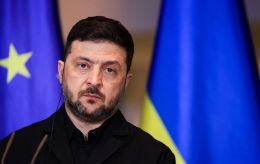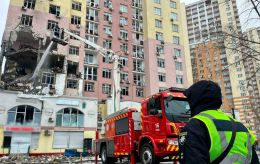Too close to border: Why Russia fixated on Kharkiv and whether Patriot be panacea for attacks
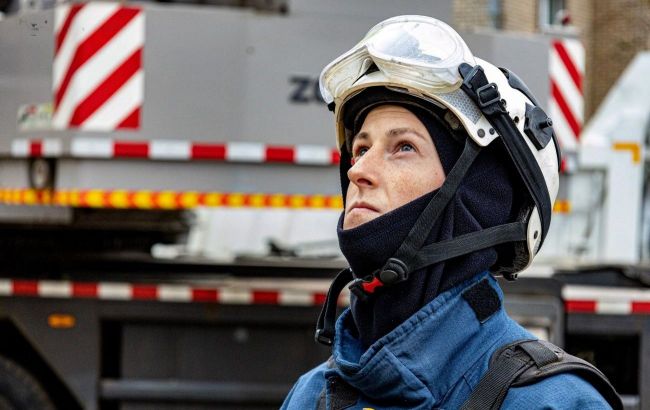 Kharkiv rescuer at the site of the Russian shelling (photo facebook.com/DSNSKHARKIV)
Kharkiv rescuer at the site of the Russian shelling (photo facebook.com/DSNSKHARKIV)
Against the background of information leaks about the alleged upcoming Russian attack on Kharkiv, Russian troops intensified their attacks on the city. Reports appeared in the Western media about the Kremlin's plans to turn it into a gray zone. Read whether there is a threat of encirclement and what is needed to protect Kharkiv in RBC-Ukraine's article.
Sources used: The Economist, President Volodymyr Zelenskyy, Mayor of Kharkiv Ihor Terekhov, head of the Kharkiv Regional Military Administration Oleh Syniehubov, Commander-in-Chief of the Ukrainian Armed Forces Oleksandr Syrskyi, experts Oleksandr Musiienko and Oleksandr Kovalenko.
Contents
- How and why Russia wants to turn Kharkiv into gray zone
- Russia's advance on Kharkiv: What authorities and experts say
- What needed to protect Kharkiv and whether Patriots will remove all threats
How and why Russia wants to turn Kharkiv into gray zone
The Russian strikes on Kharkiv have intensified since December, around the time that problems with American military aid began to make headlines. Since then, the city has suffered a large number of Russian rocket and drone attacks. But the attack on March 27 was perhaps the turning point: for the first time the city was hit by a guided aerial bomb launched from an airplane, with great destructive effect.
Read more about it in the report "Cheap and dangerous. What are UMPB bombs that Russia struck Kharkiv with."
This Russian attack occurred five days after missiles destroyed almost all of Kharkiv's energy facilities. To date, heat and power plant -5, all transformer substations, as well as Zmiivska thermal power plant 55 km to the south have been destroyed. The situation in the energy system is extremely difficult, the head of the Kharkiv Regional Military Administration, Oleh Syniehubov, declared a deficit for 300,000 Kharkiv residents and 550,000 residents of the region.
Then there were new Russian strikes with guided aerial bombs, missiles, and drones. Russian tactics have also undergone an ominous evolution: "double-touch" strikes (repeated firing of the same target) are increasingly being carried out. In particular, on April 4, drones attacked residential buildings, and when Ukrainian emergency services arrived there, they struck again. As a result, three rescuers were killed.
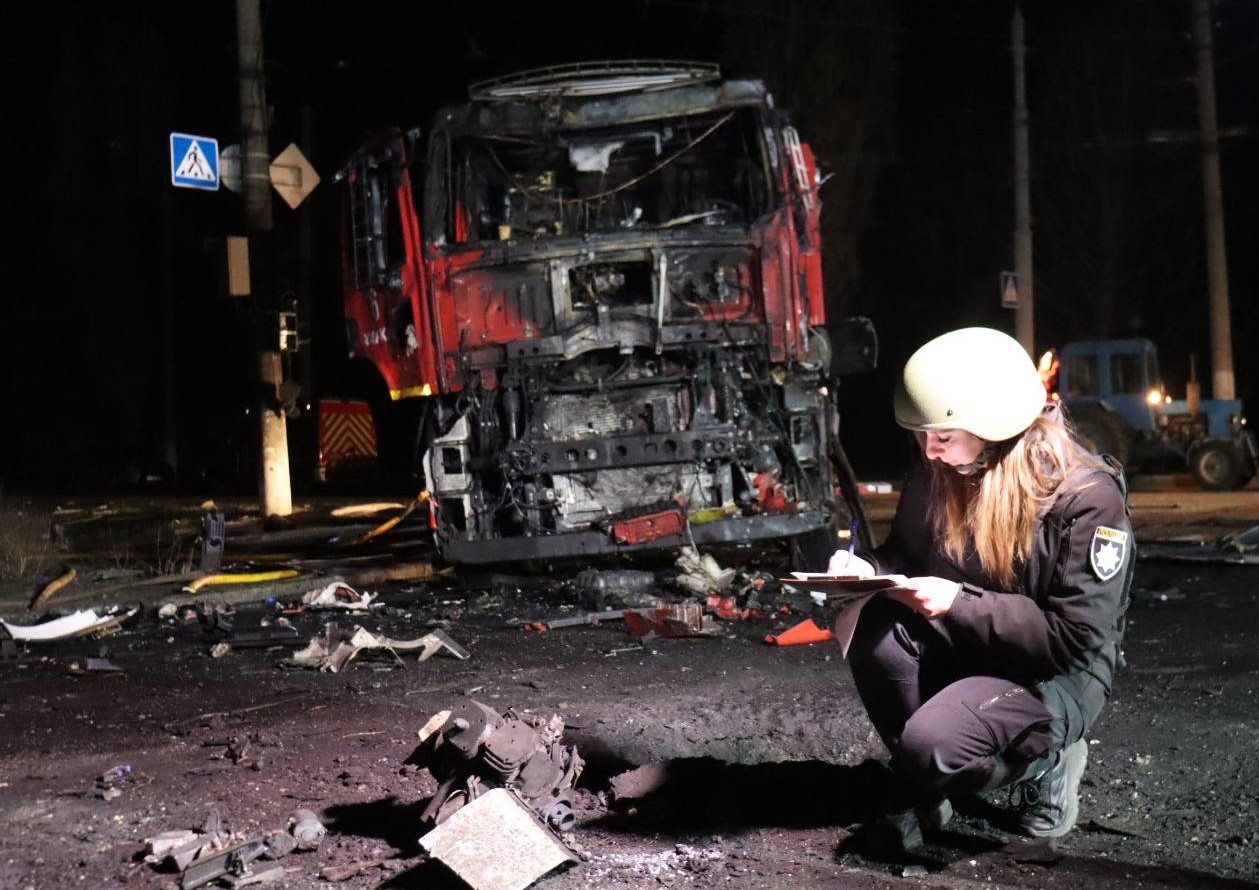 The place of the repeated Russian attack on the Ukrainian rescuers in Kharkiv (photo facebook.com/police.kharkov)
The place of the repeated Russian attack on the Ukrainian rescuers in Kharkiv (photo facebook.com/police.kharkov)
Ukrainian military sources say that with its escalation, Russia has decided to turn Kharkiv into a gray zone, writes The Economist.
Mayor Ihor Terekhov does not believe that this is possible. In an interview with the agency, he states that Kharkiv has no intention of surrendering. According to him, at the beginning of Russia's full-scale invasion of Ukraine, things were worse, when only 300,000 of the 2 million people remained.
"How can you make such a city a gray zone? People will not leave it, they have already left but then returned. They have already learned enough," he says.
It was difficult to provide Kharkiv with electricity without working power plants and transformers, but the city managed. "If I told you how we did it, it would also become a target," the mayor adds.
However, making Kharkiv uninhabitable is one of the goals of the Russian aggressor, Oleksandr Musiienko, head of the Center for Military Legal Research, is convinced. And he notes that back in March, Vladimir Putin used the term "sanitary zone".
"This non-military term is applied to territories that have become uninhabitable as a result of man-made or natural disasters. This is what Putin meant, and this is how his words should be perceived. And Russia is trying, as far as it can, to strike deep into our regions, to make Kharkiv, unsuitable for life," he tells RBC-Ukraine.
The Russians have such plans not only for Kharkiv, believes Oleksandr Kovalenko, a military and political analyst of the Information Resistance Group. According to him, if they had the opportunity, they would try to do this with many cities. The problem with Kharkiv is that it is too close to the Russian border. Accordingly, it is easier for the Russian occupiers to organize a genocide of the civilian population right here.
Russia's advance on Kharkiv: What authorities and experts say
Currently, the exact intentions of Russia are not clear, although there are signs of preparations for a major summer offensive, writes The Economist. Kharkiv is one of the possible destinations. Not the most likely, but it is already being actively discussed in the Russian mass media. However, this may indicate an information campaign of intimidation.
Earlier, Verstka, citing sources in Putin's administration, reported on plans for mass recruitment into the occupation army. Allegedly, soon, Moscow intends to mobilize 300,000 people, including for the operation to encircle Kharkiv.
Commenting on this, the Commander-in-Chief of the Ukrainian Armed Forces Oleksandr Syrskyi said that the offensive would be a big mistake for the Russians. According to him, the Ukrainian Defense Forces are currently strengthening fortifications, in addition, the experience of combat operations, when a large part of the region along with Balaklia, Izium, and Kupiansk was liberated in the fall of 2022, will be useful for defense.
"It was then that a large-scale collapse of the Russian front occurred. If the Russians go there again, Kharkiv will become a fatal city for them," the general says.
At the same time, an information campaign was launched. In the Telegram public, there are rumors about the evacuation of Kharkiv and its surroundings due to possible encirclement. Today, the military confidently controls the entire front line. Andrii Yusov, a representative of the Defense Intelligence of Ukraine, says about another IPSO (informational and psychological special operation) because strategically nothing new has happened regarding the formation of Russian assault groups.
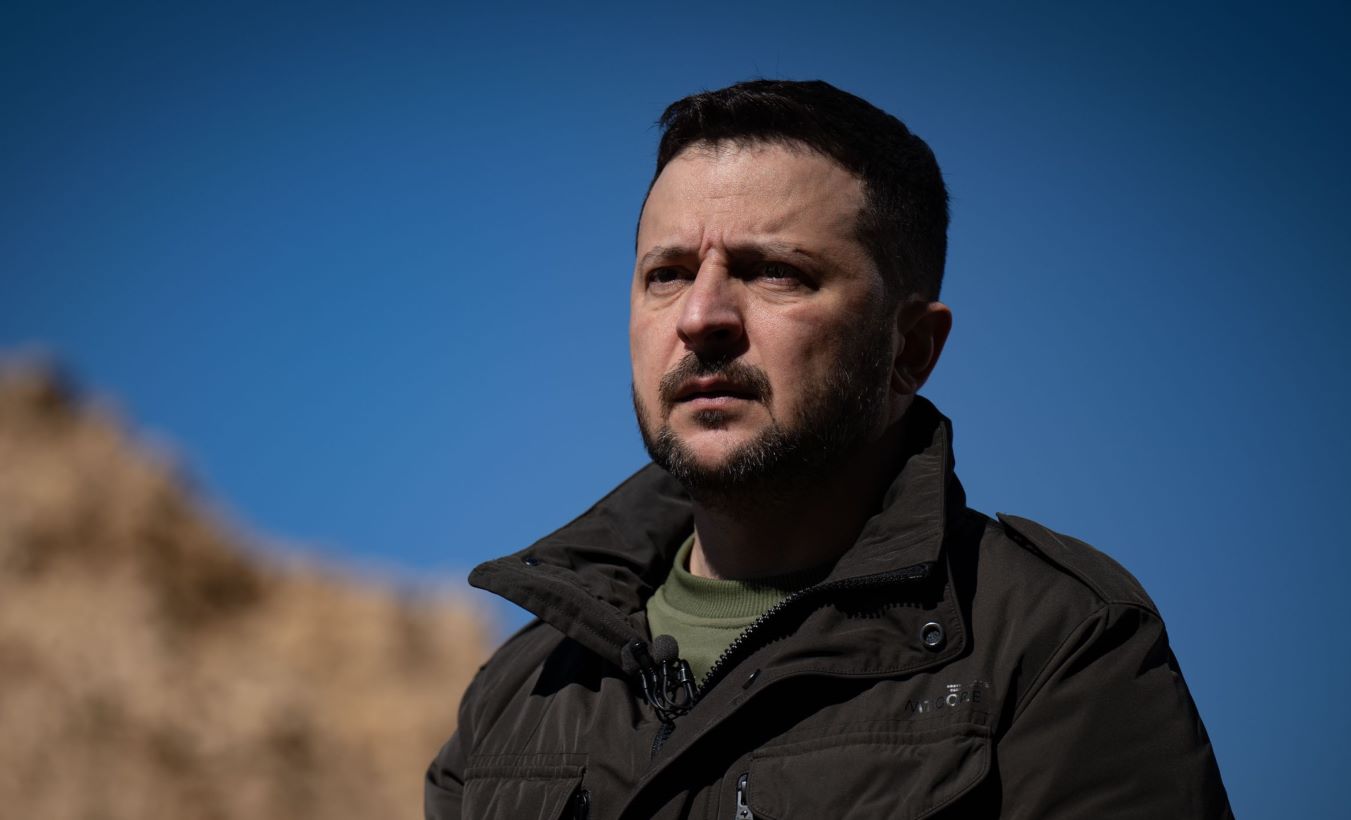 Commenting on the threat of an offensive, Volodymyr Zelenskyy said that Kharkiv is out of danger (photo president.gov.ua)
Commenting on the threat of an offensive, Volodymyr Zelenskyy said that Kharkiv is out of danger (photo president.gov.ua)
President Volodymyr Zelenskyy notes professional Russian disinformation. According to him, fakes are dispersed through Western and Ukrainian mass media. Ukraine is at war, and no one is pacifying anyone, but there is no need to exaggerate, he adds. As for defensive lines, Kharkiv is out of danger.
Terror and intimidation of civilians is a standard tactic for Russians since the time of the USSR, says Kovalenko. That is, any military operation is accompanied not only by actions of a general military nature but also by mandatory terror. To sow panic, demoralize people, and most importantly - convince them that defeat is inevitable.
"The feeling of defenselessness demoralizes and provokes distrust of the authorities, criticism, and the demand to negotiate with the enemy. And also, according to the calculations of the Russian command, distrust of the military that protects Kharkiv," the expert explains.
Regarding the scale of mobilization in Russia, the Ukrainian side also operates with a figure of 300,000. According to Zelenskyy, Russia intends to put so many people under the gun by June 1, another month can be spent on preparation. But since they are not very disciplined, perhaps the Russians will not have time to collect 300,000 by June.
Citing sources, The Economist writes that the Russian occupiers are preparing six new divisions for 120,000 troops in Eastern Siberia. This is enough to strengthen the active groups at the front, but not for the offensive on Kharkiv.
"On the other hand, the inadequate Russian command can throw 120 thousand on Kharkiv, but it cannot be done unnoticed. They will be thrown closer to the border, but forming a full-fledged shock fist in one location is not even a matter of weeks, but months," Kovalenko says RBC-Ukraine.
In any case, the Kharkiv operation will not be an easy walk. And if the first attempt in 2022 failed, when the regional center was objectively worse protected, now it is necessary to break through the reinforced defense.
According to Oleksandr Musiienko, Donbas will receive the main blow in the summer offensive. The main efforts of the Russians will be concentrated in the same directions as they are now: Avdiivka (or it's time to talk about Pokrovsk) and Chasiv Yar. Kharkiv from the north and Vuhledar from the south will become auxiliary or distracting. Thus, the Russian occupiers plan to stretch the Defense Forces of Ukraine.
"That is why I think that the main group will operate in Donetsk and Luhansk regions. I assume that there will be battles and exchanges of blows along the border between the Kharkiv and Belgorod regions. But Russia will not be able to encircle Kharkiv, let alone capture it," the expert adds.
What needed to protect Kharkiv and whether Patriots will remove all threats
In part, the problems of Kharkiv can be solved by effective air defense systems (ADS) in a complex with F-16 aircraft to repel Russian aircraft that strike with guided aerial bombs.
"Strengthening Ukrainian air defense, and speeding up the transfer of F-16s to Ukraine are vital tasks. There is and cannot be any rational explanation why Patriots, of which there are enough in the world, still do not cover the skies of Kharkiv," Zelenskyy said in March.
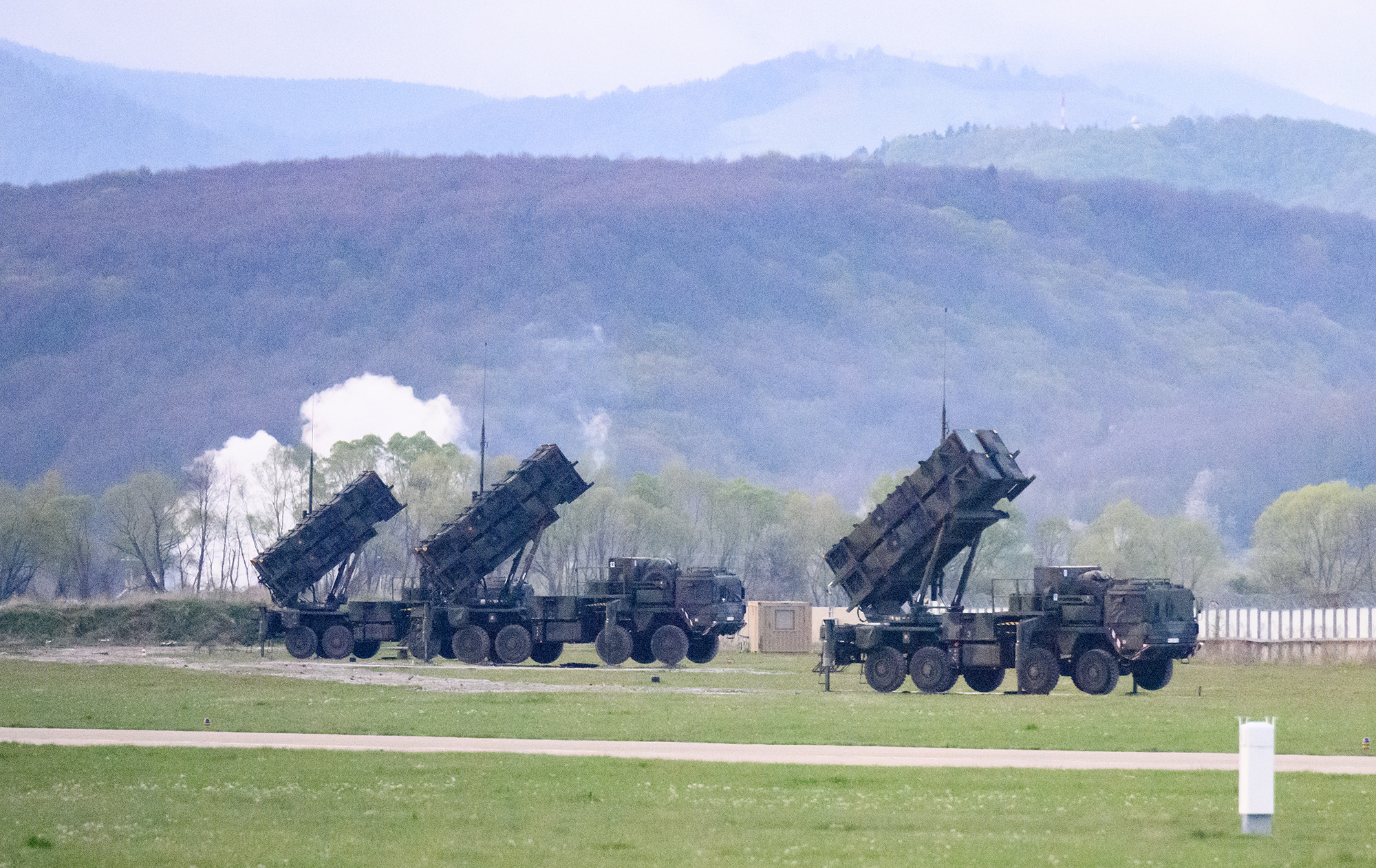 Kharkiv cannot be reliably covered without the Patriot system (photo by Getty Images)
Kharkiv cannot be reliably covered without the Patriot system (photo by Getty Images)
In total, over the past month, Russia has launched about 400 rockets, 600 Shaheds, and 3,000 guided aerial bombs. According to Zelenskyy, 25 Patriot systems of 6-8 batteries each are enough to cover all of Ukraine from ballistics. Last week, after the regular Ukraine-NATO Council, it became known that Germany would be engaged in the search for additional Patriots.
The experts interviewed by RBC-Ukraine agree that one battery for 8 launchers would be enough for Kharkiv. The next battery received may be thrown to defend this city to the east. At the same time, the Patriot itself must cover medium and small-radius complexes such as NASAMS, IRIS-T, etc. So that the battery is not broken by simpler and cheaper means, for example, Shaheds.
The Patriot reacts to ballistics when it is on constant combat duty. And its proximity to the Russian border will make it a vulnerable target. So, we still have to find a balance between reliably covering Kharkiv and not setting up air defense systems.
"This can be achieved by moving the launchers in turn. For example, while the first four launchers change locations, the other four are on duty. At the same time, their radar stations must work constantly. The process is complicated, but if defending Kharkiv with the help of Patriot, all aspects must be taken into account ", Oleksandr Kovalenko notes.
Expert Musiienko believes that the defense of Kharkiv should include at least five elements. The first is new raids by Russian volunteers and the transfer of the war to the territory of the Belgorod region with the destruction of military facilities and infrastructure. The second – strikes on the Belgorod region, detection of S-300 systems and their destruction.
"The third is the actual means of air defense and Patriot. The fourth is strikes on airfields where combat aircraft are stationed. The fifth is strikes deep into the battle formations on rear logistics so that they do not have time to prepare groups aiming at Kharkiv and other directions," he believes.
Deploying the Patriot is unlikely to solve the problem of S-300 missile attacks. There are several thousand of them in Russia and, at least at this stage, their interception, given the limited supply of interceptor missiles, may be too expensive.
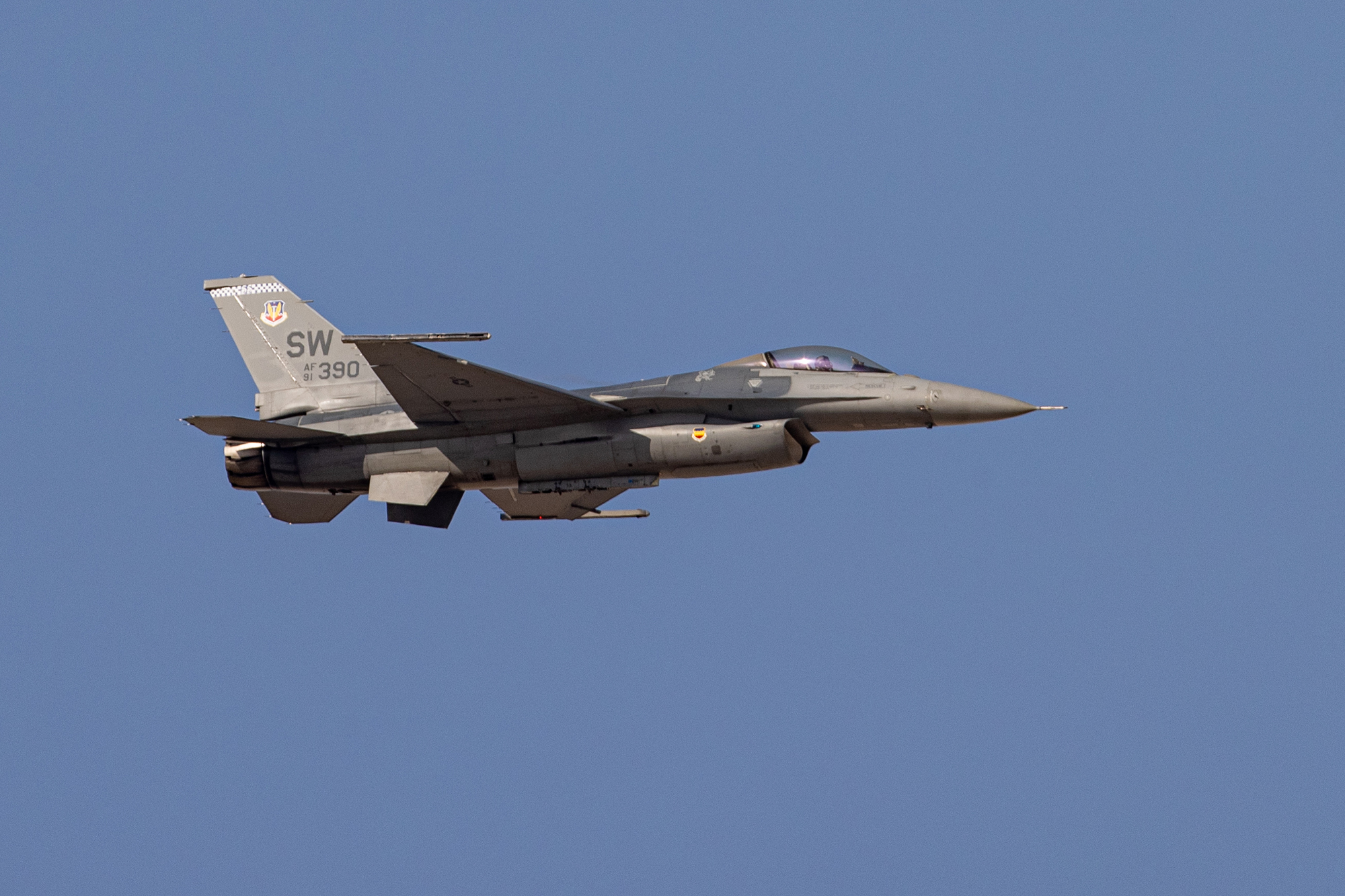 F-16 aircraft are expected to complement Ukraine's complex air defense, in particular for the defense of Kharkiv (photo by Getty Images)
F-16 aircraft are expected to complement Ukraine's complex air defense, in particular for the defense of Kharkiv (photo by Getty Images)
President Volodymyr Zelenskyy called long-range air defense systems only one of the methods of defense against Russian aircraft. Another could be a weapon against Ukrainian-made anti-tank missiles. He hinted that the weapon was already in development, but did not provide details.
Musiienko believes that it is most likely a multifunctional missile complex Sapsan (Hrim-2). Which is capable of hitting ground and air targets.
"This complex was ready for adoption at the end of 2021. Full-scale aggression prevented it, but I think Ukraine was actively working on it," he tells the agency.
Sapsan was developed to hit targets at a range of 50 to 280 km, but many sources claim that 280 km is the limit for the export version, and for the needs of the Ukrainian Armed Forces, the range can be increased to 500 km. according to some parameters, the complex is called similar to Iskander.
In November 2023, Serhii Baranov, the head of the Main Directorate of Missile Forces and Artillery and Unmanned Systems of the General Staff of the Armed Forces of Ukraine, stated, without going into details, that Sapsan exists and is constantly being improved.
Great hopes are also placed on Western aviation. In the summer, Ukraine will receive six F-16 aircraft from Denmark, by the end of the year, perhaps a few more from the Netherlands. In total, both partners have promised to deliver about 40 units, but the pace depends on pilot training.
In any case, under the most positive scenario in 2024, we will have only 10% of the necessary combat aircraft, Zelenskyy said the other day. In order not only to fight but also to defeat Russia in the sky, much more is needed. It is quite likely that the first Ukrainian F-16s will immediately be used in the defense of Kharkiv.
"One of the main tasks is to work against enemy aircraft. Of course, they will work in those directions where the enemy uses corrected air bombs. And in the Kharkiv region," Musiienko believes.
